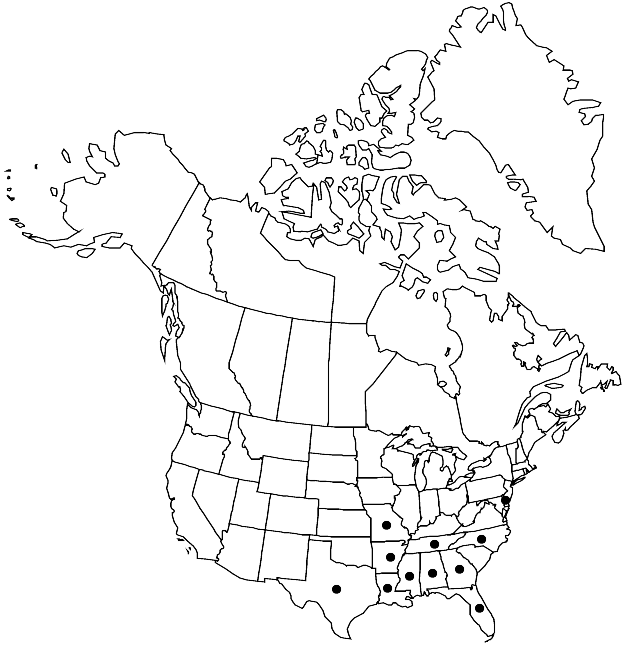Difference between revisions of "Leskea australis"
A. J. Grout, Moss Fl. N. Amer. 3: 193. 1934.
FNA>Volume Importer |
imported>Volume Importer |
||
| Line 56: | Line 56: | ||
|publication year=1934 | |publication year=1934 | ||
|special status=Endemic | |special status=Endemic | ||
| − | |source xml=https:// | + | |source xml=https://bibilujan@bitbucket.org/aafc-mbb/fna-data-curation.git/src/bb6b7e3a7de7d3b7888a1ad48c7fd8f5c722d8d6/coarse_grained_fna_xml/V28/V28_544.xml |
|genus=Leskea | |genus=Leskea | ||
|species=Leskea australis | |species=Leskea australis | ||
Revision as of 22:46, 27 May 2020
Plants dark green or brown. Stems with branches ascending, ± tightly foliate, not curved at apices. Stem and branch leaves slightly differentiated. Stem leaves distinctly longer than broad, 0.4–0.7 mm; apex slenderly acuminate. Branch leaves ± crowded, ovate-lanceolate, not or slightly 2-plicate when dry, 0.2–0.5 mm; margins plane; apex gradually acuminate to acute, often blunt; costa subpercurrent; distal laminal cells 4–7 µm, bulging-papillose abaxially. Seta yellow-brown, 0.4–0.9 cm. Capsule yellow-brown, cylindric, straight, 1.2–1.8 mm; annulus 1- or 2-seriate; operculum conic, short-rostrate; exostome teeth whitish; endostome segments very short, irregular. Spores 9–13 µm, very finely papillose.
Phenology: Capsules mature year-round.
Habitat: Lower trunks and base of hardwood trees and bald cypress, logs, low woods along rivers, streams, sloughs, swamps
Elevation: low to moderate elevations (0-400 m)
Distribution

Ala., Ark., Del., Fla., Ga., La., Miss., Mo., N.C., Tenn., Tex.
Discussion
Leskea australis is common on the coastal plain of the southeastern United States. This species is distinguished by the rigid, dark green or brownish mats with ascending, terete-foliate, and somewhat tapering branches and small leaves. The branch leaf abaxial costa surface is slightly roughened, especially proximally.
Selected References
None.